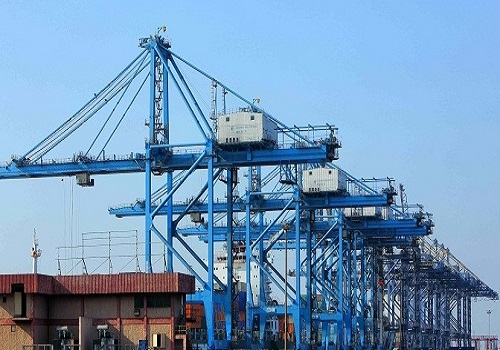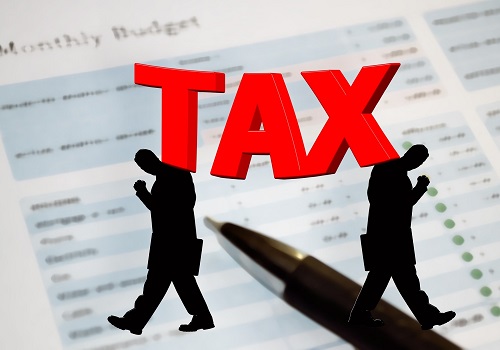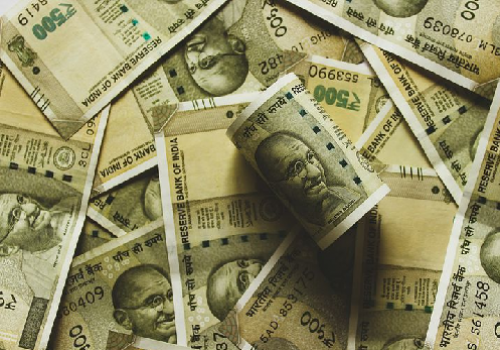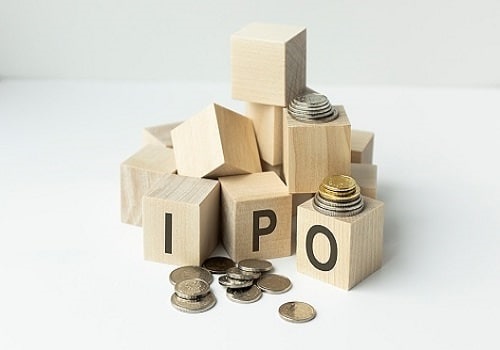Fiscal deficit in Jul `21 at 21.3% of BE aided by higher receipts - ICICI Securities

Follow us Now on Telegram ! Get daily 10 - 12 important updates on Business, Finance and Investment. Join our Telegram Channel
https://t.me/InvestmentGuruIndiacom
Download Telegram App before Joining the Channel
Fiscal deficit in Jul ’21 at 21.3% of BE aided by higher receipts
* India’s fiscal deficit reaches 21.3% of BEFY22 by Jul ‘21: India’s fiscal deficit at the end of Jul 2021 stood at Rs 3.2trn or 21.3% of BEFY22. Off late, monthly fiscal deficit numbers have been pointing to good health of central government finances. In FY21, by July the fiscal deficit had reached 103% of budget estimate and 44% of revised estimate for the year. In FY20 and FY19 as well, by July the fiscal deficit had reached 59% and 83% of actual deficit numbers respectively. On an average, during FY14 and FY20 the fiscal deficit reached 69% of the full-year number by July. Compared to this, the fiscal deficit has just about exceeded one-fifth of the full-year target in the first four months of the year in FY22, indicating good fiscal health.
* Higher revenue driving fiscal deficit lower: An analysis of the sources of contraction in fiscal deficit reveals that higher revenue is driving the deficit lower. By Jul 2020, fiscal deficit stood at Rs 8.2trn while in Jul 2021 it came in at Rs 3.2trn i.e. contraction of Rs 5trn. Out of this, higher revenue receipts contributed Rs 4.5trn while lower expenditure contributed only Rs 500bn. Hence, ~90% of the contraction in fiscal deficit is driven by higher receipts and only 10% by lower expenditure. More specifically, higher tax revenue contributed Rs 3.2trn (65%), higher non-tax revenue contributed Rs 1.1trn (23%), higher non-debt capital receipts contributed Rs 86bn (2%), lower revenue expenditure contributed Rs 663bn (13%) and higher capital expenditure contributed Rs 165bn (-3%) to the fiscal deficit contraction of Rs 5trn between Jul ’21 and Jul ’20. This is an encouraging sign because firstly, the deficit reduction is not due to lower expenditure and secondly higher tax revenues are driving the contraction.
* Gross tax revenue (GTR) touches 31% of BEFY22: Gross Tax Revenue collection during the first four months of the fiscal came in at Rs 6.9trn or 31% of full year target. During Apr-Jul 2020, GTR stood at Rs 3.8trn as revenue collection plummeted during the lockdown. By July 2020, GTR collection was just 15% of BE and 20% of RE for the year. On an average, GTR collection during the first four months of the fiscal stands at ~23% of full year collection. This corroborates the fact that revenue collection has been exceptionally strong in FY22 so far. Net Tax Revenue also came in at Rs 5.3trn till Jul ’21 or 34% of full-year target.
* Direct and indirect taxes touch 28% and 32% of full-year targets respectively: In line with other taxes, direct tax collection has also been strong so far. Out of the total direct tax collection target of Rs 11trn, the government has so far collected Rs 3.07trn (28% of BE). Out of this, corporate tax collection accounts for Rs 1.45trn while income tax collection accounts for Rs 1.6trn. Normally till July, direct tax collection comes in at just 18% of full-year numbers. Indirect tax collection reflects the same story: so far the government has collected ~32% of full-year target for indirect taxes.
* Non-tax revenue reaches 58% of BEFY22 due to RBI dividend: Non-tax revenue reached 58% of full-year target of Rs 2.4trn. It should be noted that the RBI transferred large dividend to the government in May 2021, leading to a sudden increase in non-tax revenue. Disinvestment revenue continued to languish: proceeds from disinvestment currently stand at only Rs 84bn or just 5% of full-year target of Rs 1.75trn.
* Expenditure lags behind normal trend; govt spends only 29% of BEFY22 till July: While government revenues have been healthy, expenditure has been lagging behind normal trend. Till July 2021, the government has spent only 29% of total expenditure, 30% of revenue expenditure and 23% of capital expenditure budgeted for FY22. This is much lower than an average spend of 35% of full-year number for total and revenue expenditure, and 33% of full-year number for capital expenditure. In terms of growth, the government has cut total expenditure by 5% y/y and revenue expenditure by 7% during the Apr-Jul 2021. The only silver line is that it has increased capital expenditure by 15% during the said period.
To Read Complete Report & Disclaimer Click Here
For More ICICI Securities Disclaimer https://www.icicisecurities.com/AboutUs.aspx?About=7
Above views are of the author and not of the website kindly read disclaimer










Top News

JMB Group wins bid to manage Jawaharlal Nehru Port Authority`s Mumbai berth terminal for 30 ...
Tag News

Monthly Debt Market Update, September 2023: CareEdge Ratings



More News

Tax collections up by 24% in current fiscal year-on-year







